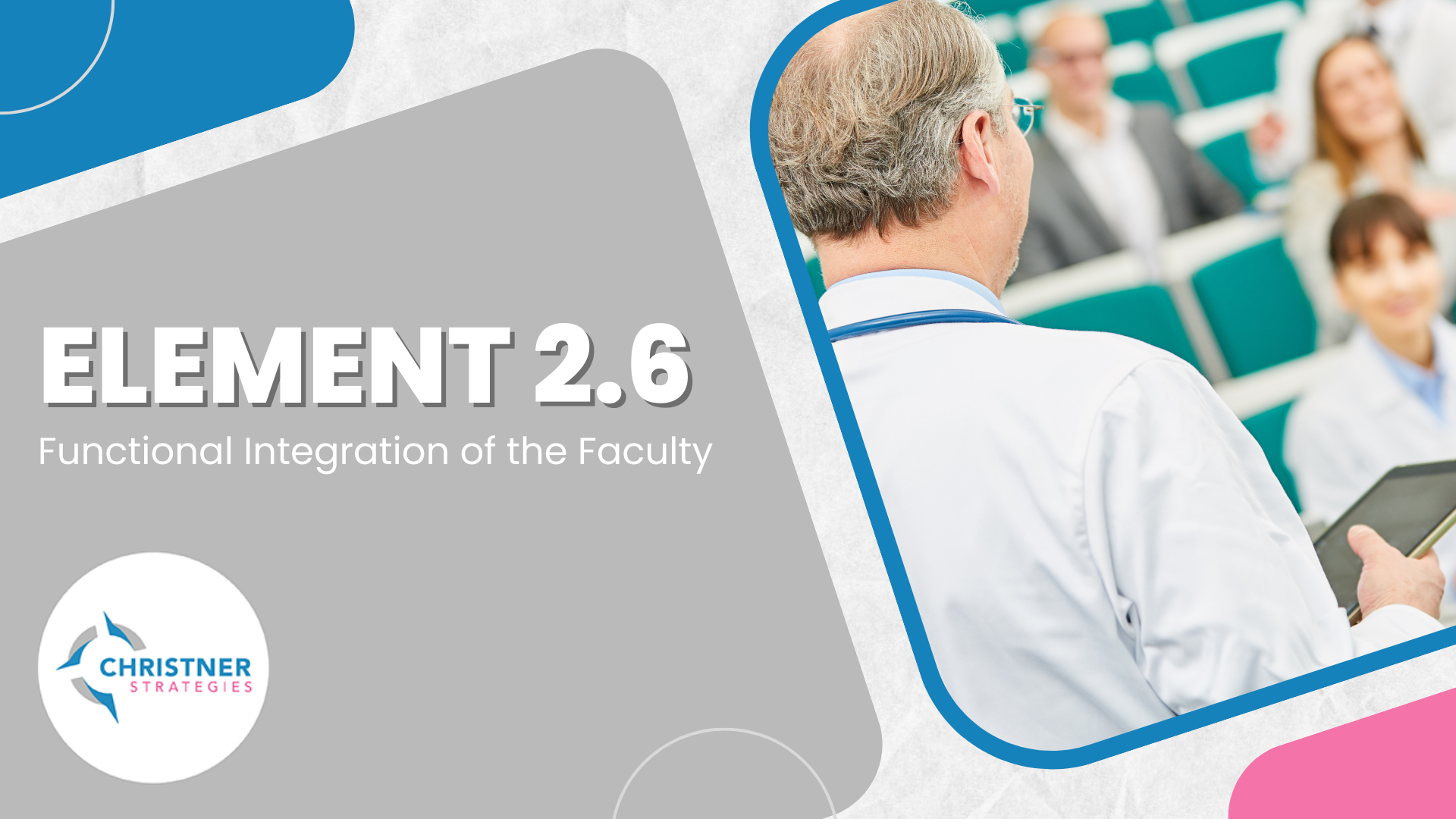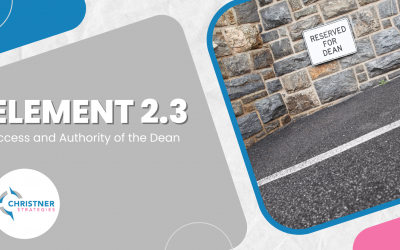LCME Element 2.6 – Functional Integration of the Faculty
At a medical school with one or more regional campuses, the faculty at the departmental and medical school levels at each campus are functionally integrated by appropriate administrative mechanisms (e.g., regular meetings and/or communication, periodic visits, participation in shared governance, and data sharing).
Hidden Curriculum
This element’s intent is for a medical school to take the lead in being inclusive of regional campus leadership and faculty because functional integration is essential to many elements. The complexity of maintaining functional integration may increase with the number of regional campuses, but the Data Collection Instrument (DCI) fortunately articulates mechanisms for compliance. First, regional campus leadership, faculty, and senior administrative staff must have representation on committees, and this representation must be codified in policy. Full stop; no exceptions.
Next, there need to be clear lines of communication and established meetings between the medical school’s leaders and pre-clinical course/clerkship directors and its regional campus counterparts. Overall, this element is designed to honor the relationships required to carry out a common mission when a medical school expands beyond a single campus.
Best Practices
A school must ensure functional integration at all levels of operations, and the efforts to create cohesion should be well-documented via agendas, minutes, itineraries, and/or communication logs. It may be helpful to organize functional integration in three ways: an overarching level that includes executive leadership and governance; another level that focuses on communication between MD program leadership and campus deans; and then a day-to-day level that supports course coordination.
At a high level, an MD program has many committees that facilitate collaborative decision-making (e.g., admissions committees, curricular committees, and promotions committee), and regional campus representation is required. Create clear policies/by-laws that document the purpose of each committee, its composition inclusive of regional campuses, and frequency of meetings. Place these policies/by-laws on your school’s website for easy access. Also, within this overarching level, is relationship-building between school and regional campus department chairs and executive leadership. Although we live in the age of Zoom, a medical school’s executive deans and department chairs should strive to make annual, in-person visits to regional campuses. Such visits signal a commitment to partnerships, as well as provide a first-hand picture of resources and student satisfaction.
At the programmatic level, school and campus leadership (deans for student affairs and academic/curricular and senior administration) should maintain monthly communication via video conferencing and hold quarterly in-person, retreats. As a gesture of inclusivity, consider rotating the location of retreats so each regional campus hosts. If an MD program organizes these time-intensive retreats, aim to use the events for multiple purposes. Portions of retreats can be dedicated to course and site directors working together (course evaluations and curricular design), as well as enable student services representatives to meet with students (e.g., financial aid and career/academic counseling).
Finally, within the sphere of daily operations is communication between the school’s pre-clinical course/clerkship directors and the regional campuses’ site directors. These parties require a greater frequency of communication, likely monthly via video conferencing and impromptu email exchanges. The nature of this communication is intended to work out course management and student support to ensure comparability. Please include course coordinators in these meetings as these staff members are equally important in functional integration and their contributions are often minimized or overlooked. Note: the DCI requires the submission of organizational charts that outline the relationship between pre-clinical and clerkship course leadership and site directors. Make this document useful by including contact information of faculty and administrative staff.
Continuous Quality Improvement
Functional integration supports CQI by ensuring the right people are at the table and have the appropriate information to maintain compliance. In advance of each academic year, create a master calendar that documents standing meetings, visits, and retreats, and then secure the availability of very busy faculty as soon as possible. With this calendar in mind, align events to support continuous quality improvement by indicating the elements and data to be reviewed. Finally, document, document, document! Create a system to collect documentation of functional integration and then task the right administrative staff person to maintain it.



0 Comments